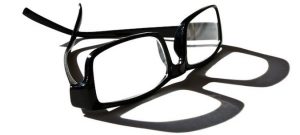The Dangers of Vision
 “You push the button, we do the rest.” Kodak founder George Eastman’s vision was to put a camera in everyone’s hands. The inexpensive Brownie was the first camera that the public could afford, and they used it to capture all those “Kodak moments.” This is a company that did not lack ambition; they had the best minds in the world, they had innovative technology and patents.
“You push the button, we do the rest.” Kodak founder George Eastman’s vision was to put a camera in everyone’s hands. The inexpensive Brownie was the first camera that the public could afford, and they used it to capture all those “Kodak moments.” This is a company that did not lack ambition; they had the best minds in the world, they had innovative technology and patents.
They invented the first digital camera. So, why is this photography giant in such sad shape? They could not change their vision; even though they had advanced the photography industry, they wouldn’t advance with it.
Sign Up For
E-Newsletter
A vision, in a technical business sense, doesn’t change. It is your reason for existence; it is why you are here. So, Eastman’s vision of allowing everyman to capture family moments is still very much valid; the vision that you have to capture those moments on 35mm and then send your film to get processed, though, is not. This is what Kodak failed to change, and it cost them. It is never a good idea to fall in love with your ideas; it doesn’t make for a healthy relationship.
When we create a vision, it is perfect. It is what must happen. We attach words like “destiny” or “fate” to it. The last thing we want is for someone to say, “Yeah, that’s nice, except it won’t work,” or, “If we did it this way, it’d work better.” How dare anyone touch our vision? It’s like someone telling you how to raise your child.
The problem is, though, that sometimes they’re right: sometimes your kid is badly behaved. Sometimes your idea won’t work. Sometimes it could be better. You have to be able to step back and look at it objectively. Will this work? And you know what, if it won’t, something else will. You have to adjust and make accommodations for the pesky things that get in the way of your vision, like reality. You have to allow other people into the raising of your child and be able to accept other ideas and modifications.
The worst thing we can do is get stuck with a vision of how the future is supposed to be; it rarely is how it’s “supposed” to be. We have a vision of our purpose, of our values; but beyond that, we have to be willing to flex with the market, with the times, with other ideas, with what could be better.



